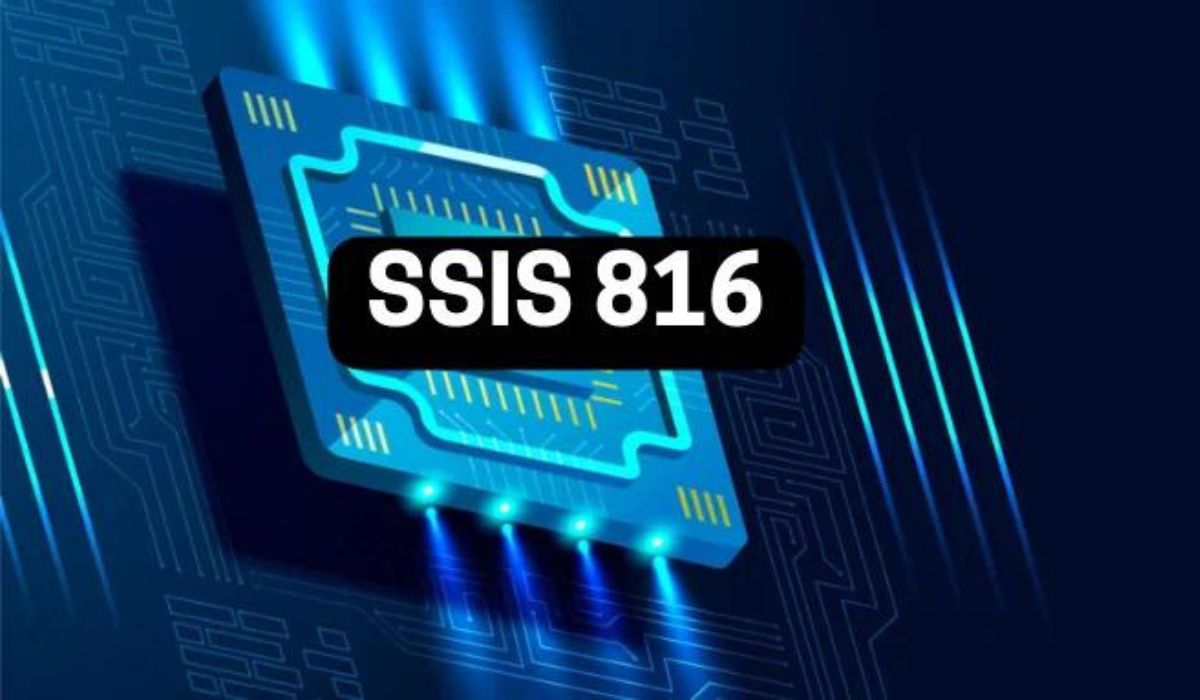Introduction
In the realm of data management, SSIS 816 (SQL Server Integration Services) stands out as a crucial tool for data integration. This platform provides a comprehensive suite for extracting, transforming, and loading (ETL) data from various sources. By leveraging the power and precision of SSIS 816, businesses can streamline their data processes and ensure high-quality data management. This article explores the key features, benefits, and applications of SSIS 816, making it an indispensable resource for data professionals.
Understanding SSIS 816: A Deep Dive
Definition and Purpose
SSIS 816 is a component of Microsoft SQL Server, designed primarily for data integration and workflow applications. It enables users to perform data extraction, transformation, and loading (ETL) efficiently. SSIS helps organizations consolidate data from disparate sources, ensuring that the right data is available for analysis and decision-making.
History and Evolution
The journey of SSIS began with its introduction in SQL Server 2005, evolving significantly with each new release. Version 816 brings several enhancements, including improved performance, user-friendly interfaces, and advanced data transformation features. These updates aim to meet the growing demands of data-driven businesses.
Key Components
SSIS 816 consists of several core components:
- Data Flow: Manages the flow of data from source to destination, enabling complex transformations along the way.
- Control Flow: Controls the execution of tasks within an SSIS package, defining the order of operations.
- Execution Tasks: Includes various tasks such as data transfer, data cleansing, and more, to facilitate seamless ETL processes.
The Power of SSIS 816: Key Features and Benefits
Data Extraction, Transformation, and Loading (ETL)
SSIS 816 excels in its ETL capabilities, allowing users to efficiently extract data from multiple sources, transform it into a desired format, and load it into target systems. This streamlining of data processes not only saves time but also enhances the quality of data available for analysis.
Integration with Other Tools
One of the strengths of SSIS 816 is its seamless integration with other Microsoft tools, such as SQL Server and Azure. This interoperability allows organizations to create comprehensive data workflows that leverage existing infrastructure and enhance overall productivity.
Performance and Scalability
SSIS 816 is designed to handle large volumes of data with impressive performance. Its scalability ensures that as organizations grow and their data needs increase, SSIS can adapt to accommodate those changes without sacrificing speed or efficiency.
Data Quality and Validation
Data quality is paramount in any data-driven environment. SSIS 816 includes built-in features for data validation and cleansing, ensuring that only high-quality data is processed and utilized. This capability minimizes errors and enhances the reliability of business intelligence initiatives.
Real-World Applications of SSIS 816
Data Warehousing and Business Intelligence
SSIS 816 plays a pivotal role in data warehousing and business intelligence (BI) projects. By consolidating data from various sources into a centralized warehouse, organizations can analyze trends and make informed decisions based on accurate, up-to-date information.
Data Migration and Consolidation
When organizations undergo mergers, acquisitions, or system upgrades, data migration becomes essential. SSIS 816 facilitates this process by consolidating data from different systems, ensuring a smooth transition while maintaining data integrity.
ETL Pipelines
Creating complex ETL pipelines is another vital application of SSIS 816. These pipelines automate the data processing workflow, making it easier to manage and transform large datasets efficiently.
Mastering SSIS 816: Tips and Tricks
Best Practices for SSIS Development
To maximize the effectiveness of SSIS 816, consider the following best practices:
- Plan Your Packages: Outline your ETL process before development to ensure clarity and efficiency.
- Use Logging and Error Handling: Implement logging to track package execution and handle errors gracefully to avoid data loss.
- Optimize Performance: Regularly review and optimize your SSIS packages to enhance performance, especially when working with large datasets.
Troubleshooting Common Issues
Common issues in SSIS 816 can often be resolved by:
- Reviewing Error Messages: Understand error messages to pinpoint issues in the data flow or control flow.
- Testing Packages: Conduct thorough testing of packages in development before deploying them to production.
- Utilizing Forums and Documentation: Engage with the SSIS community and consult official documentation for solutions to persistent problems.
Performance Optimization
To optimize SSIS packages for better performance, consider:
- Minimizing Data Movement: Reduce unnecessary data transfers to enhance efficiency.
- Using Buffering: Adjust buffer sizes based on available memory to improve data flow processing.
- Parallel Execution: Leverage parallel execution to run multiple tasks simultaneously, speeding up overall processing.
The Future of SSIS: Trends and Innovations
Integration with Cloud Platforms
As businesses increasingly adopt cloud technologies, It is adapting to integrate with cloud platforms like Azure Data Factory. This integration allows for cloud-based ETL processes, enhancing flexibility and scalability for organizations.
Emerging Technologies
SSIS is evolving alongside emerging technologies such as artificial intelligence (AI) and machine learning. These innovations enable users to leverage advanced analytics and automate data processes further, enhancing the overall effectiveness of data management.
Future Versions and Enhancements
The future of SSIS looks promising, with potential enhancements focusing on improved user interfaces, enhanced integration capabilities, and support for new data sources. These developments will ensure that SSIS remains a relevant and powerful tool for data professionals.
You May Also Like: Explore TanzoHub: Your Gateway to Metaverse Learning
Conclusion
In summary, It is a powerful and versatile tool for data integration, providing essential features for ETL processes, performance, and data quality. Its ability to integrate seamlessly with other Microsoft tools and its applications in data warehousing, migration, and complex ETL pipelines make it an indispensable resource for organizations looking to master their data integration challenges.
FAQs
What is SSIS 816?
It is a component of Microsoft SQL Server used for data integration, focusing on ETL processes to manage and transform data.
What are the key features of SSIS 816?
Key features include data extraction, transformation, loading capabilities, integration with other Microsoft tools, and data quality validation.
How does SSIS 816 support data warehousing?
It consolidates data from multiple sources into a centralized warehouse, facilitating business intelligence and data analysis.
What best practices should I follow when using SSIS 816?
Best practices include planning ETL packages, implementing logging, and optimizing performance through efficient data movement.
What is the future of SSIS?
The future of SSIS involves enhanced integration with cloud platforms, adaptation to emerging technologies, and ongoing feature enhancements.











